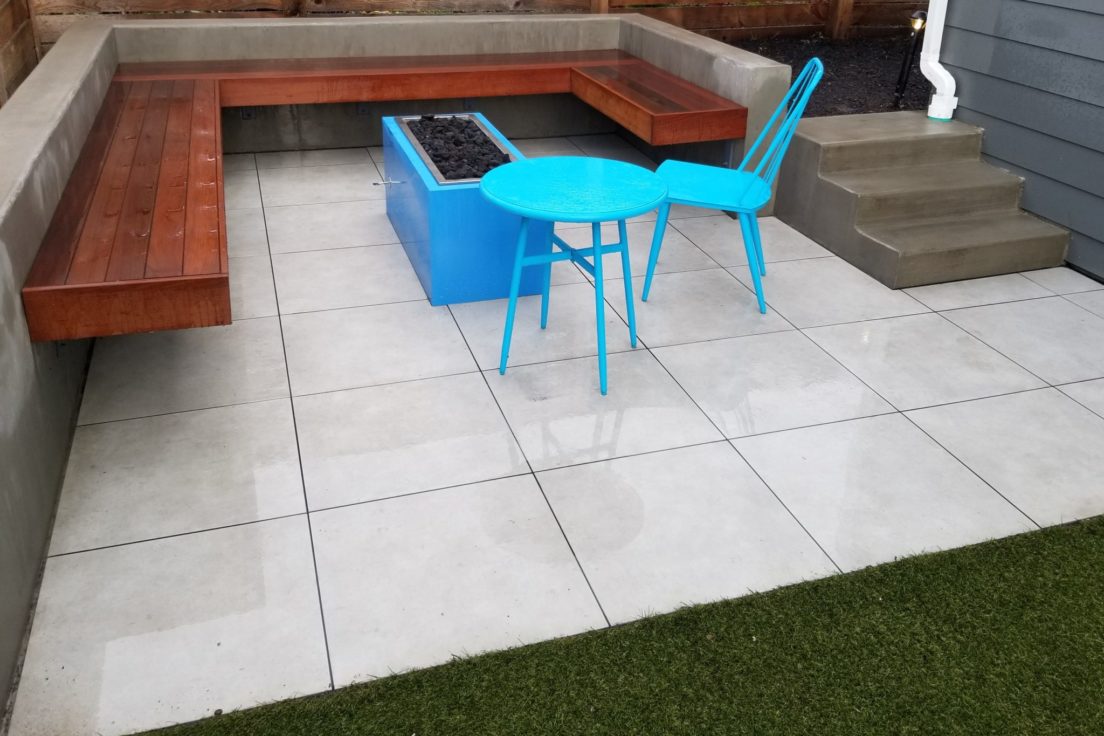A few new clients have contacted us over the past few months about redesigning their rain gardens. In most cases, they are the happy owners and first occupants of new homes that have gone up during Seattle’s current building boom. These moments are great for us because we get to further solidify our knowledge around the City’s code for drainage and dive into the Stormwater Manual!
One of the best parts about researching these projects is explaining to clients why the city regulates stormwater, even on private home lots. All of them understand the need to slow down stormwater in order to protect infrastructure and our waterways. Without exception, our clients understand the need to manage stormwater and want the work on their property done according to code.
Rain Garden Options
In a growing number of cases, these new homeowners are looking for help in altering the stormwater management on their property to a different kind of facility. Most want an option that will let them use and enjoy their space better, and a few just don’t like the looks of their rain garden.
Rain gardens have grown in popularity in Seattle, for good reason. They are effective tools for helping water infiltrate into the ground rather than quickly running off into the storm sewer system, and they are relatively inexpensive. Occasionally, however, they are placed on sites in a way that satisfies the regulations for the builder but takes up a lot of valuable space for the people who end up living in the house. As one friend of ours said, “I can see why they went with a rain garden and why you wouldn’t want one.”
Luckily, they city offers a number of different solutions for stormwater management on any given site. Great! Just replace that rain garden with a drywell under the lawn so the kids don’t get muddy every time they go in the yard! Right?
Permit Required
Well, we were hoping it would be that easy. Stormwater management and drainage facilities are permitted aspects of any project in the City of Seattle. February’s heavy snow and its melting runoff gave us all a good reminder of why those regulations are so important. Without them, there is an increased potential for urban flooding and more pollution in our waterways. Unfortunately, the protocols for permitting a change from a rain garden to a hidden drywell weren’t established quite yet.
Most of the side sewer permit procedures have been set up with developers building new homes in mind. The coming wave of homeowners looking to remake their space, including their stormwater facilities, needs to have a clear path to permit their work so that they can be sure to meet the requirements with a design that makes usable sense in their yards.
Success
At True Scape Design, we live for these moments. We worked with some very helpful people at the Seattle Department of Construction and Inspections to guide our first rain garden conversion project through permitting. Our hope (and theirs) is that this pioneer project will help to establish a clear path for this kind of remodel. Hopefully, this path will make the permit process for these projects easier for both builders and the reviewers at SDCI.
And we already have a second one in the making.
Resources
Bioretention for Stormwater Management
The City of Seattle Stormwater Manual holds requirements and design specifications for every kind of stormwater management.
The City also hosts a Stormwater page with links to the code, a training presentation, forms, documents, design checklists, and tips.
